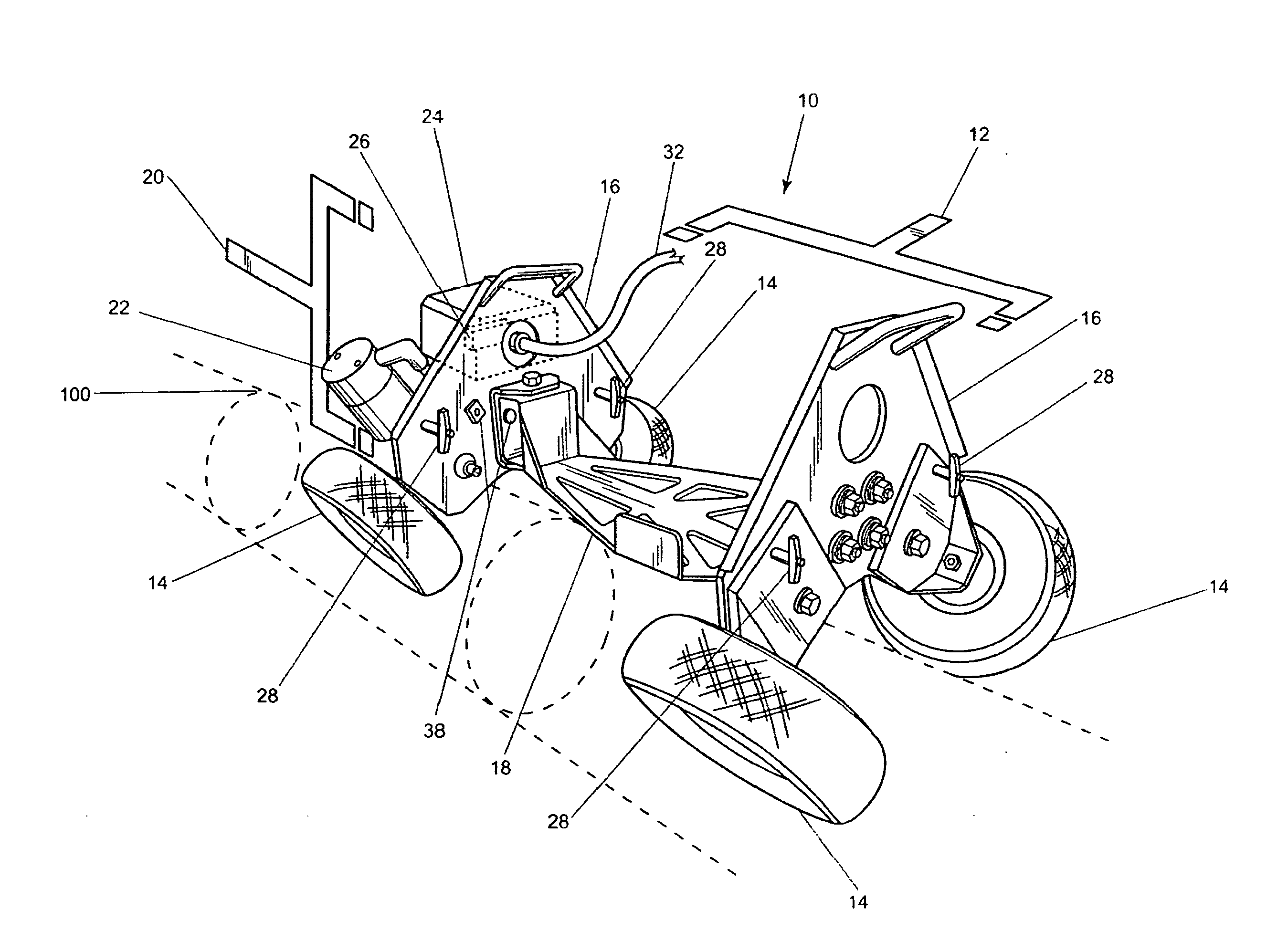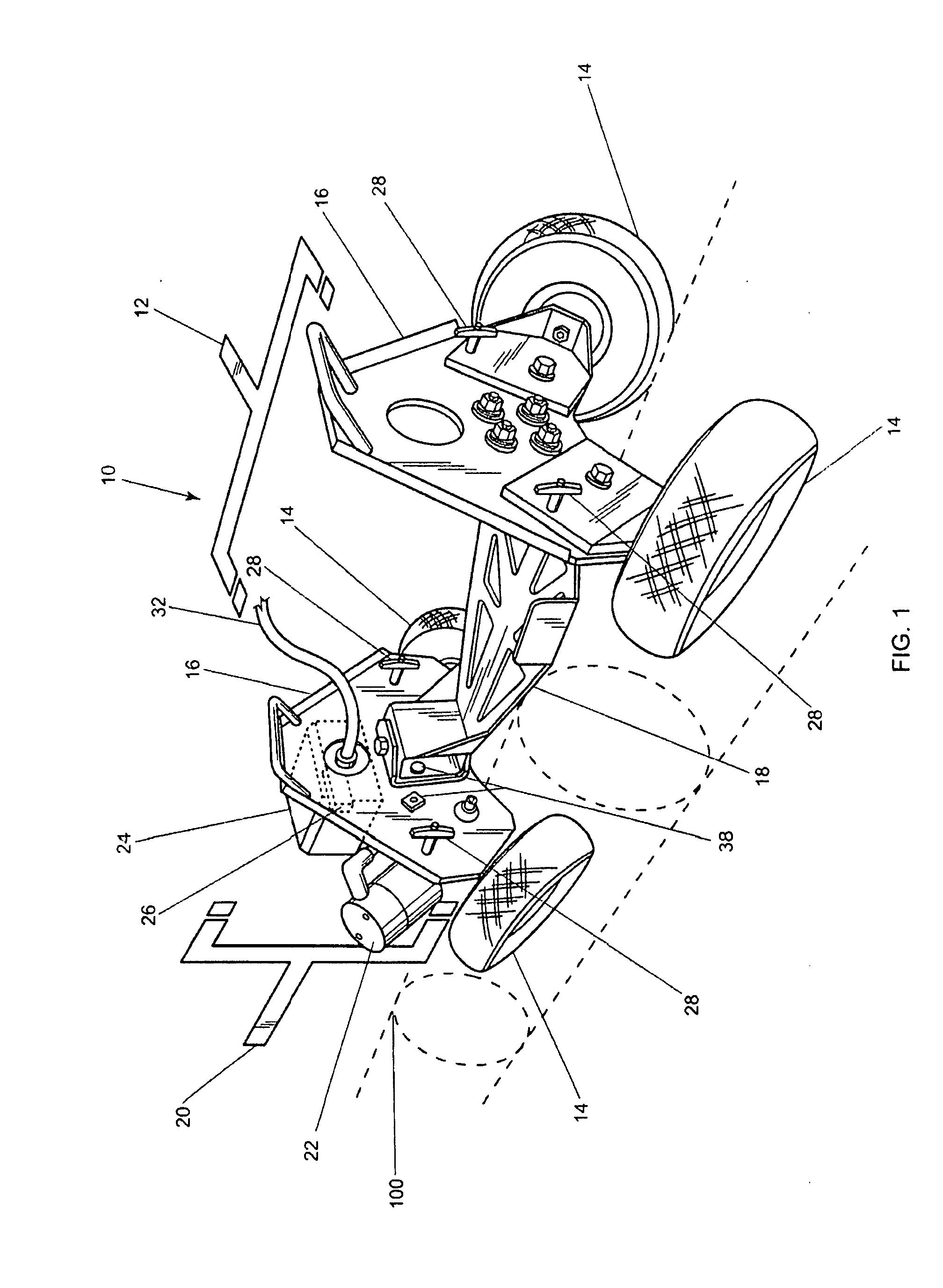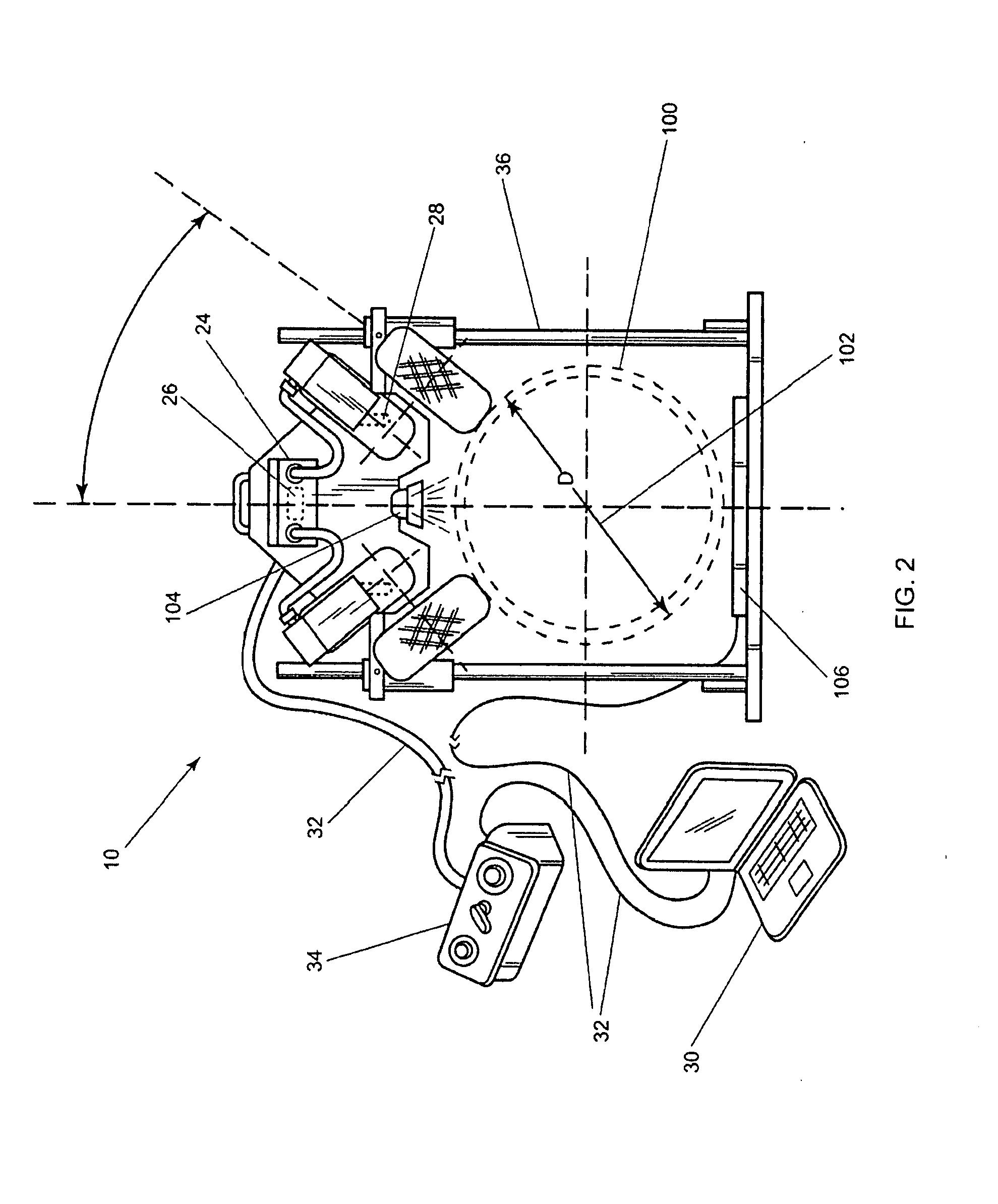Crawler for inspecting pipes
a crawler and pipe technology, applied in the direction of instruments, process and machine control, distance measurement, etc., can solve the problems of pipe loss, inability to visually inspect the pipe, injury to persons and the environment, etc., and achieve the effect of improving the scanning cycle tim
- Summary
- Abstract
- Description
- Claims
- Application Information
AI Technical Summary
Benefits of technology
Problems solved by technology
Method used
Image
Examples
Embodiment Construction
)
[0024]FIG. 1 shows a perspective view of the crawler. Crawler 10 has chassis 12 which rides on four (4) tires 14. Chassis 12 comprises end plates 16 and a frame 18 which make up the base of the crawler system. Tires 14 are preferably constructed for traction on a pipe surface 100. Tires 14 are solid tires with material removed 110, as shown in FIG. 5, by water jet, drilling, or other material removal to allow for damping and increase tire to pipe surface contact. Although solid tires are discussed, air or other fluid filled tires can be used with varying types and designs of tread patterns, with or without magnetic qualities, or in the alternative a track driving system could be employed (not shown). Crawler 10 further comprises drive system 20 which contains one or more drive motors 22 used for forward motion and steering. For the embodiment shown, two (2) drive motors 22 are shown independently driving front tires 14. However, this disclosure is intended to include a separate dri...
PUM
 Login to View More
Login to View More Abstract
Description
Claims
Application Information
 Login to View More
Login to View More - R&D
- Intellectual Property
- Life Sciences
- Materials
- Tech Scout
- Unparalleled Data Quality
- Higher Quality Content
- 60% Fewer Hallucinations
Browse by: Latest US Patents, China's latest patents, Technical Efficacy Thesaurus, Application Domain, Technology Topic, Popular Technical Reports.
© 2025 PatSnap. All rights reserved.Legal|Privacy policy|Modern Slavery Act Transparency Statement|Sitemap|About US| Contact US: help@patsnap.com



